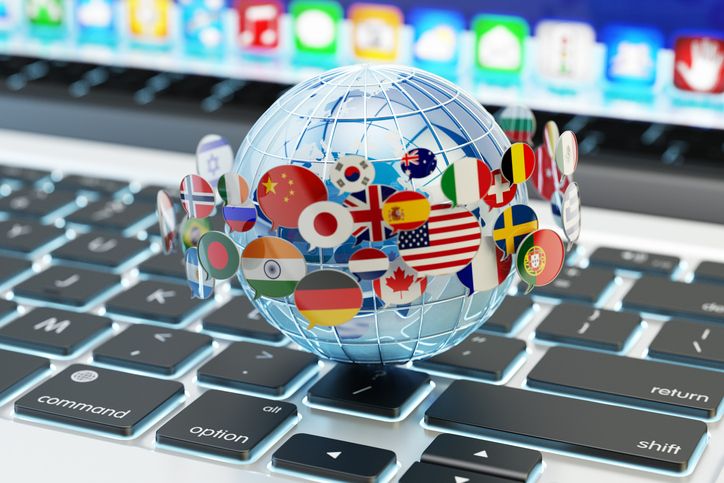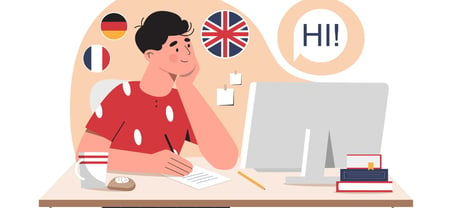
Ask most Language Service Providers (LSPs) how much language services cost, and the answer will be a veiled version of “how long is a piece of string?” While this answer isn’t very helpful, it just means they don’t have all the facts from you. They don’t have a brief.
We understand your frustration. Maybe you don’t even know if it’s a piece of string. What if it’s a piece of paper, or a wire, or…okay, we’ll stop the metaphors now.
In short, the answer to “how much do language translation services cost” is: it depends.
It depends on a variety of factors. Factors that we’ll break down in this article.
At LinguaLinx, we do everything in our power to make the language services industry transparent. We often have clients come to us looking for a pricing structure because they’re expanding into new territory. They’re looking for the best way to allocate their budget or the best advice on what the budget should be.
In this article, we’ll look at the kind of information an LSP would be looking for to give you an accurate steer (help in creating the budget line in your budget) even if you don’t know what the end deliverables are yet.
There can be a lot of variables, so let’s focus on the big blocks that happen every time, and we won’t shy away from figures.
Cost of Language Translation Services
What Type of Translation Do You Need?
The cost of translation can depend on how much human oversight is needed. The best translation is Localized Human Translation.
This involves a human (or team) every step of the way and ensures that your content is perfect, not only grammatically correct for the target language but also localized so it hits the exact demographic you’re aiming for.
One small step down from localized human translation involves a first step that engages Artificial Intelligence (AI). This AI first-pass is called Machine Translation (MT).
MT lets AI do the initial grunt-work for you, then you can come in and finish off to whatever level of detail is necessary. It’s a bit like prepping a room for decoration - AI strips the old wallpaper, fills the holes, and puts on the base layer of paint so you can come in and do the detail.
Then, the decision is how much human time is necessary, or in the budget, to edit the MT version. This is called Post-Editing, and there are three levels:
- MT with full Post-Editing - Everything is checked to retain the complete grammatical composition of the source content. It’s the best choice for consumer-facing materials.
- MT with light Post-Editing - The translation gets a quick once-over to ensure it’s all in context. This is the best choice for internal comms or translation with a short lifespan.
- Raw MT - No human oversight. A raw translation that’s useful for situations where the reader only needs a basic understanding of the material. For example, if there was just a set of instructions that someone had to read once internally that was really simple and not going to be used again.
What are Your Target Languages?
What languages do you need your content in? Different languages come with different price tags. Rare languages tend to be at the higher end of the spectrum.
What’s a rare language? As a rule of thumb, the fewer people who speak the language globally, the rarer it is.
The cost of living in the country also plays a factor. It tends to be the case that the more common the language, and the cheaper the cost of living in that country, the less the translation will cost because there are more translators available.
For example, Indian languages, Spanish, Mandarin, French, and Italian are all relatively inexpensive. They’re common languages spoken in countries that are more affordable to live in and, therefore, easier to find translators to work with.
At the other end of the spectrum are Korean, Scandinavian, and African languages (there are up to 2000 distinct languages in Africa!)
How Quickly Do You Need it?
Okay, this isn’t unique to the language services industry. If you want something done quickly, chances are you’re going to have to pay a premium. Translation is no exception.
Want a 5,000-word document translated into Swahili by this Friday? Well, you can imagine the logistics of making that happen and the small (or maybe not so small) team needed to do it.
Usually, a quick turn-around for an LSP on a text document of 2,000 words in a straightforward language, and taking into consideration Quality Assurance (QA) would be two to three business days. But...of course, it can be done faster if more resources can be allocated to it.
Will You Be Charged Per Word or Per Hour?
The cost for your translation will be determined by taking all of the above into consideration. If you partner with an LSP, you might have a number of translation or interpretation needs, and as their client, you may be charged on a project basis.
That said, the LSP will still use a system to determine the rate. Most translations are calculated on either a per word or per hour basis.
Per word is more common and, depending on the factors listed above, can range from $0.09 to $0.40 per word.
If you’re being charged by the hour, the figure is going to typically range between $30 and $70 an hour.
We’re Committed to Giving You Figures…
…But really there is no one guide to how LSPs charge for translations. You can see it’s a number of different ingredients that give you the cocktail that’ll best serve your business.
However, if we had presented no figures at all in this article, even though they’re only indicative, it would’ve been useless to you, and you’d have spent five minutes of your life you’d never get back.
The bottom line is: if you bear in mind these four key pillars - the amount of human oversight, the rarity of the target language, timescales, and being charged per word or per hour - you’ll likely be in a place where all of the other details fall within these parameters.
So, armed with this information, you’re now better prepared to approach an LSP with your translation project.
Because that’s the best solution: Get an LSP partner on board who can give you the best advice on how to allocate your budget to maximize it.
Get a Quote for Your Translation Project
If you’re thinking about a translation project, we’d love to sit down and talk with you about it.
Consultations are free and there’s no obligation.
With LinguaLinx, you won't ever have to worry about your message getting lost as it’s translated. You know you're in good hands with our ISO 17100 and ISO 9001 compliance, twenty years of professional translation experience, and the organizations whose trust we've earned.






